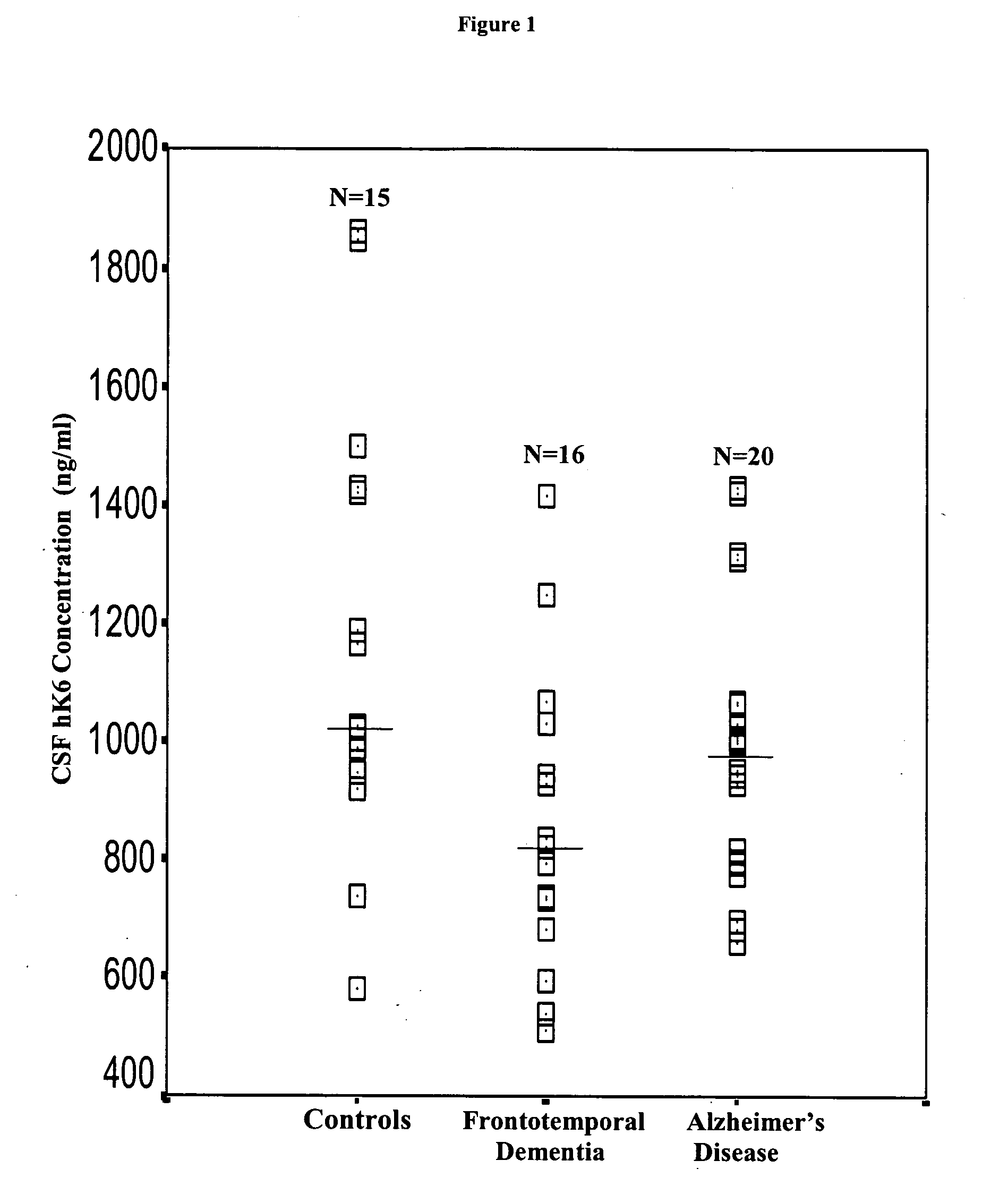Detection of neurodegenerative diseases
- Summary
- Abstract
- Description
- Claims
- Application Information
AI Technical Summary
Benefits of technology
Problems solved by technology
Method used
Image
Examples
example 1
[0222] Various kallikreins were quantitated in CSF of 20 patients with Alzheimer's disease [AD], 16 patients with frontotemporal dementia [FTD] and 15 controls. The levels of various kallikreins were correlated with the presence of AD or FTD. Among all kallikreins measured, detectable levels in CSF were identified for kallikreins hK6, hK7 and hK10. Other tested kallikreins [hK5, hK8, hK11 and hK13] were unmeasurable. The most notable differences between kallikrein levels in CSF and the three groups of subjects were seen between controls and FTD patients for hK6 [decrease in FTD; p=0.017], controls and FTD patients for hK7 [decrease in FTD; p<0.001] and controls and AD patients for hK7 [decrease in AD; p=0.019]. Also, significant differences were seen between FTD patients or control subjects and patients with AD patients for hK10 [increase in AD; p≦0.02]. Approximately half of the AD patients had CSF hK10 levels that were higher than all patients with FTD except one and all control s...
PUM
| Property | Measurement | Unit |
|---|---|---|
| Level | aaaaa | aaaaa |
Abstract
Description
Claims
Application Information
 Login to View More
Login to View More - R&D
- Intellectual Property
- Life Sciences
- Materials
- Tech Scout
- Unparalleled Data Quality
- Higher Quality Content
- 60% Fewer Hallucinations
Browse by: Latest US Patents, China's latest patents, Technical Efficacy Thesaurus, Application Domain, Technology Topic, Popular Technical Reports.
© 2025 PatSnap. All rights reserved.Legal|Privacy policy|Modern Slavery Act Transparency Statement|Sitemap|About US| Contact US: help@patsnap.com



